|
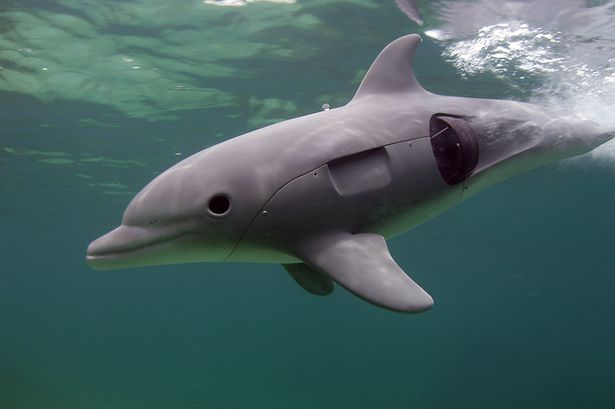
ROBOT
DOLPHIN - An underwater robot that is designed to blend in with live
animals to capture their movements.
MARINE ANIMATRONICS
The sea is full of weird creatures – none more strange than these lifelike spy robots used to film the private lives of dolphins for TV.
Each radio-controlled swimming model is fitted with HD cameras to capture unique footage of the unsuspecting marine mammals.
What might look like a colourful fish, shark,
squid, giant clam or turtle has at its heart a small submersible packed with high-tech equipment.
There are even motorised model dolphins, so realistic that the real ones – among the smartest animals on earth – happily accepted them into family groups.
The amazing underwater cameras were created by award-winning wildlife film-maker John Downer to shoot his spectacular new TV series Dolphins: Spy in the Pod.
In one sequence shot off the coast of Costa Rica in Central America, a 15mph Spy Dolphin guided by experts in a high-speed inflatable boat, easily kept pace with real-life spinner dolphins which can cover 250 miles a day. Then, when the spinners dived, the surveillance task was passed from Spy Dolphin on the surface to the superfast Spy Tuna.
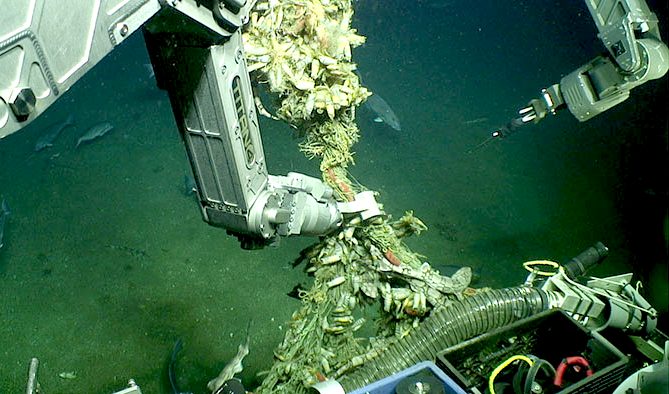
Suitably
disguised ROVs could be used to rescue marine animals that are trapped in
fishing nets and ropes.
Down in the depths, the fake fish caught up with a megapod containing many thousands of dolphins and filmed the spectacle for the first time.
One of the quirkiest of Downer’s creations is Spy Nautilus, which is based on a vividly-coloured mollusc.
Like the other robots featured in the BBC1 series, the nautilus has its mini HD cameras hidden in its eyes.
A family of bottlenose dolphins in the Indian Ocean found the machine so intriguing that they surrounded it – revealing to the camera in close-up a tiny five-day-old calf, still wrinkled from birth.
Another undersea gadget is Spy Turtle, an accurate model of the real thing that was able to capture magical shots of bottlenose dolphins surfing the waves in perfect synch.
Off the Florida coast, Spy Dolphin teamed up with Spy Ray to make an extraordinary discovery – a pod of dolphins whipping up a mud wall to encircle their mullet prey.
The clever hunters panicked the fish into swimming straight into their waiting mouths.
Most of the behaviour captured has never been seen before, including dolphins forming alliances with stingrays and other fish to hunt together for food.
Downer’s wildlife documentaries have previously employed devices such as boulder cams,
iceberg cams and even penguin cams.
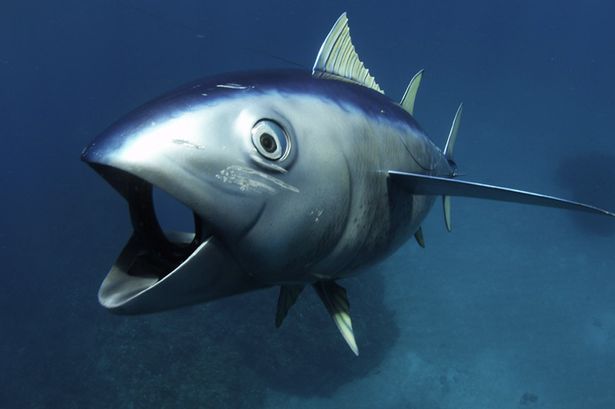
ROBOT
TUNA - Another underwater robot that is designed to blend in with live
animals to capture their movements.
But the new series presented a different challenge.
He told The Sunday
People: “Our spy creatures had to keep pace with fast-moving dolphins, often out in the deep ocean.
“The dolphins were very curious about their new neighbours but allowed them into their lives.
“It enabled us to film one of the world’s favourite animals in a whole new light.”
Series producer and zoologist Rob Pilley conceived and, with a team of model makers, created the 13 robotic creatures used in the series.
He said: “These animatronic devices are specialised pieces of kit. They were each designed with absolute accuracy for a specific purpose, covering all angles from the surface right down to the seabed.
“They had to blend in and mimic the actions of the real creatures on which they were based. That was the only way to win the trust of the dolphins.
“Dolphins are among the most intelligent animals on the planet. They tested the robots with their sonar scans and clearly knew that they were not the real thing. But they were not spooked by them.
“And once they had become accustomed to them they showed a healthy curiosity. This was vitally important in filming an animal that is always on the move.
“The dolphins slowed down to examine and sometimes play with our spy devices. They gave Spy Turtle a bit of a turn. We watched from our control boat off Mozambique as a group of young males circled the device.
“We made Spy Turtle manoeuvre to try to keep them on camera. But they decided to have a fight right in front of it. The dolphins swirled around it so swiftly that they created a vortex – which made Spy Turtle turn turtle.”
Another moment of panic during filming almost cost the team dear.
Rob is quoted as saying: “Spy Tuna had a power failure and sank to 75ft. It would have continued to the ocean depths if an
underwater cameraman had not dived in after it.
“He caught up with it and rescued £100,000 worth of irreplaceable equipment.”
One remarkable piece of kit employed by Downer’s team was a fake baby dolphin, called Spy Baby, that “speaks” to real dolphins. The 3ft model, shown in our main picture, has a two-way hydrophone and speaker that lets it record sounds made by the creatures.
It then plays them straight back – engaging the intrigued dolphins in “conversation”.
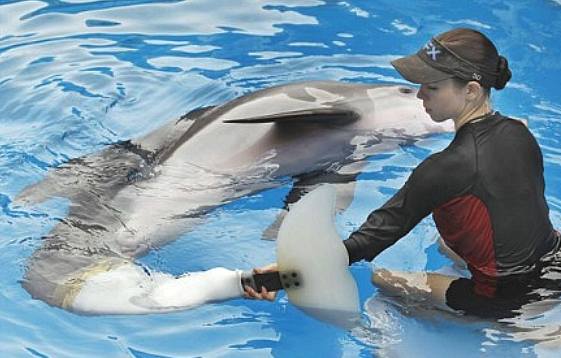
WINTER
THE DOLPHIN - Not a robot, but a prosthetic aid for 'Winter' the
dolphin. After an unprecedented effort by doctors, staff and volunteers at the Clearwater Marine Aquarium, a rehabilitation facility for sick and injured sea life, the dolphin was fitted with a unique artificial tail and taught to swim again.
DOLPHIN FRIENDLY TUNA, MAY 2015
You have probably seen cans of tuna in your local supermarket marked “dolphin safe.” That label means the tuna was
fished in a way that spares most dolphins from being killed in the tuna fleet’s giant nets. In this podcast, biologist and guest reporter Matt Leslie brings us a story about tuna, the intertwined fate of fisheries and dolphins, and the work of scientists. It’s a story that lies behind the label of every can of tuna. It spans two generations of scientists and a revolution in scientific methods. Matt reports from a dolphin morgue in La Jolla, California, USA.
TRANSCRIPT:
Ari: From the Encyclopedia of Life, this is One Species at a Time. I’m Ari Daniel. In this episode, we’re handing things over to Matthew Leslie – a PhD student at Scripps Institution of Oceanography at UC San Diego in La Jolla, California. He wrote us saying he wanted to do a story about his science, which wouldn’t be possible without a special dolphin morgue. We were intrigued to hear more. Here’s Matt.
Matt: Sometimes an environmental problem is so difficult that it requires multiple generations to solve.
That’s certainly the case when it comes to the story of the two species I study: spotted dolphins, or Stenella attenuatta, and spinner dolphins, or Stenella longirostris.
I’ll get to my work on these species in a minute, which involves that morgue Ari mentioned, but first I need to give you some background.
In the eastern Pacific, thousands of miles from land, spotted and spinner dolphins have a special bond with large tuna – they’re almost always found together. Fishermen have known this for a long time, and they’ve come to rely on the dolphins they see at the surface to find schools of tuna below. For years, they used fishing poles to catch tuna. But all this changed in the 1960s with the advent of large plastic nets.
Bill: I went on a boat back in 1966 and saw the operation.
Matt: This is my research advisor, Bill Perrin. He retired a few weeks ago, after working 46 years as a biologist with the National Oceanic and Atmospheric Administration, or
NOAA. Back in the 60s, Perrin was a PhD student researching the fishery.
Bill: I was very impressed by it…Tremendous stresses involved, great winches working in all a big industrial operation.
Matt: Nets a mile long could encircle entire schools of fish. Boats were harvesting more
tuna than ever, but countless dolphins were paying the price.
Bill: and of course the dolphins were trapped and many of them didn’t make it out.
Matt: Perrin saw over a thousand dolphins die on a single fishing trip. He was deeply troubled. So he started a program to train over a hundred and fifty biologists to be observers onboard tuna boats.
The idea was to count how many dolphins were being killed, and collect as many samples as possible to understand the impacts on the dolphins.
In addition to the first estimates of how many dolphins were dying, the effort resulted in the best collection of dolphin tissues in the world, and it resides at NOAA’s Southwest Fisheries Science Center, located on the Scripps campus. I call it the morgue. Susan Chivers is the curator, and she offered to show me around.
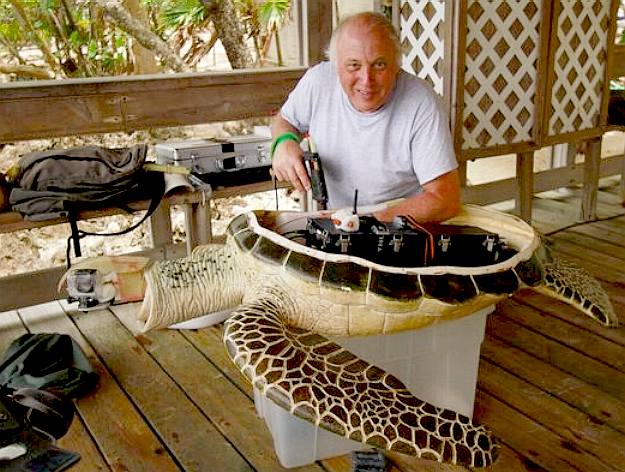
RORVs
and ANIMATRONICS - The sea is full of weird creatures – none more strange than these lifelike spy robots used to film the private lives of dolphins for
BBC television. Radio-controlled swimming models are fitted with HD cameras to capture unique footage of the unsuspecting marine mammals.
What might look like a colorful fish, squid, giant clam or turtle has at its heart a small submersible packed with high-tech equipment.

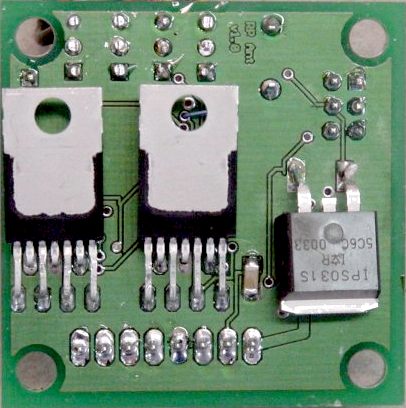
There are even motorised model dolphins, so realistic that the real ones – among the smartest animals on earth – happily accepted them into family groups.
This tends to suggest that a rescue ROV that is suitably disguised to look
more friendly, will stand more chance of rescuing a trapped mammal without
unduly stressing the animal, than if not adapted psychologically. Turtle and
other robot animals by: John Downer Productions Ltd. Leighside, Bridge Road,
Leigh Woods. Robot speed controllers like that shown above are available
from most good electronics suppliers.
Susan: It’s a very big space.
Matt: The room’s the size of a small gymnasium. It’s clean and bright with floor-to-ceiling shelves, each one packed with jars containing dolphin body parts.
Susan: Here we have a wall of gonads; banks and banks of ovaries.
Matt: One shelf is packed with jars containing hundreds of jaw bone fragments, each one from a different dolphin. Biologists used the teeth from these
jaws to determine the age of the dolphins.
Susan: and I think it is moving for people to see – when you realize that the jaws of over 40,000 dolphins are here on these shelves. It does kind of bring it home to you how many dolphins were…handled by fisheries observers… and how many actually killed.
Matt: Over six million dolphins died as a result of the tuna fishery. And all those dead dolphins didn’t go unnoticed.
Wayne: The level of mortality became visible to the American public.
Matt: This is Wayne Perryman, a biologist at NOAA. Public outcry forced the fishermen to change their nets, and the way they haul them in, which allows the dolphins to escape. The kill is down from hundreds of thousands of animals a year to only a thousand. You’d think that would be a good thing, but Perryman says the spotted… and spinner… dolphins still haven’t recovered.
Wayne: We don’t know why it’s taken so long… Maybe the fishery is having an effect we can’t measure. Maybe this is just the nature of populations.
Matt: Populations are just groups of individuals that don’t really mix with one another and to recover a species, we have to make sure that all the populations are recovering.
When Bill Perrin measured the dolphin skulls in the morgue, he found three populations of spinner dolphins and two populations of spotted dolphins.
For the last 20 years conservationists have used these population definitions to manage the dolphins. But Perrin suspected early on that his approach was too coarse – that maybe there were even smaller groups, subpopulations, that need special protection.
That’s where I come in. I’m using DNA that comes from the morgue to look for these subpopulations. I assumed that because the skulls were different, the genes would be too. But when I looked at 14 different genes – I couldn’t see the differences Perrin found. This doesn’t mean they’re not there, I think I’m just looking in the wrong place.
Now I’m scanning all the DNA of these dolphins – their entire genomes –
hoping to find the subtle differences that reveal the smaller populations – so we can get the recovery plan right.
My advisor Bill Perrin had no idea when he was collecting dead dolphins in the 60’s, that one day we’d be able to peer inside their cells and read their DNA. And yet, the mission’s the same – saving the dolphins – and it makes this 40-year-old morgue as important as ever.
Bill: It’s a gold mine. The tuna fisheries continue – we’re not 100% sure that what they’re doing is fully sustainable. We have data and specimens here that may help us answer that question.
Matt: I’m honored to be following in Perrin’s footsteps – to solve a problem that my generation inherited from his – and applying the latest tools in science to specimens collected well before I was
born.
Ari: That was Matthew Leslie a PhD student at Scripps Institution of Oceanography at UC San Diego, and our guest reporter for this episode. Check out his photos of that dolphin morgue on our website – eol.org.
Our series, One Species at a Time, is produced by Atlantic Public Media in Woods Hole, Massachusetts. Special thanks to the National Science Foundation IGERT Program for support producing this episode. I’m Ari Daniel Shapiro.
The One Species at a Time podcast series is supported by the Harvard Museum of Comparative Zoology.
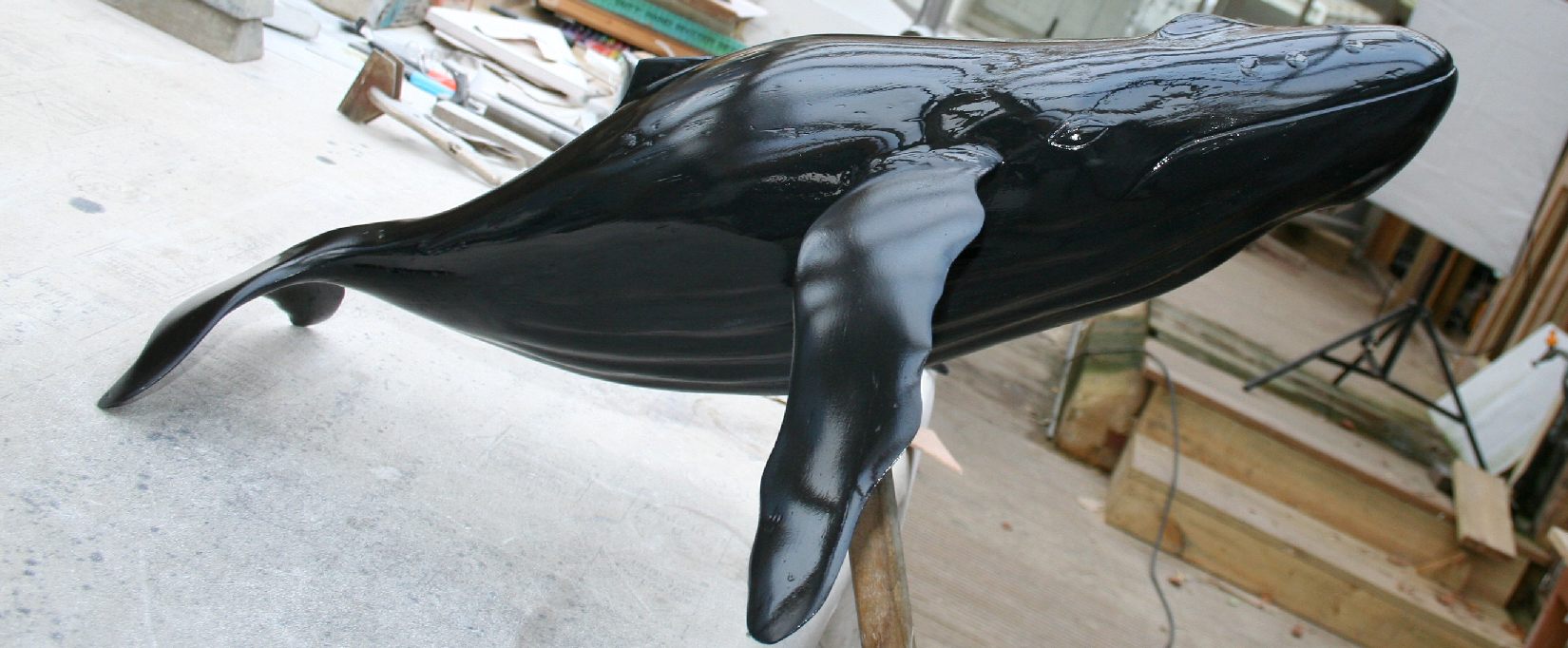
HUMPBACK
- This is a 1/20th scale model of Kulo Luna, a humpback whale for use in
displays with the SeaVax
and Elizabeth
Swan tank test models. She is made of fibreglass, 760mm (30")
long and will float in water at the correct displacement. Seen here in
a basecoat for final grey and white primer coats before detailing. The
skills needed to make such models quickly might be needed for larger
exhibits in connection with the Cleaner Ocean Foundation's awareness
campaigns. Imagine a full size humpback whale or even a megalodon.
Copyright © Jameson
Hunter December 22 2018.
ENCYCLOPEDIA OF LIFE (EOL)
The Encyclopedia of Life has gathered information from all over the world to create the largest repository of species known to science. Their mission is to increase awareness and understanding of living nature through an Encyclopedia of Life that gathers, generates, and shares knowledge in an open, freely accessible and trusted digital resource.
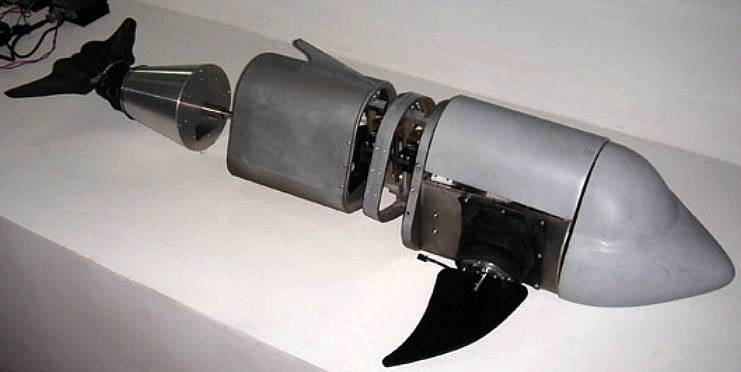
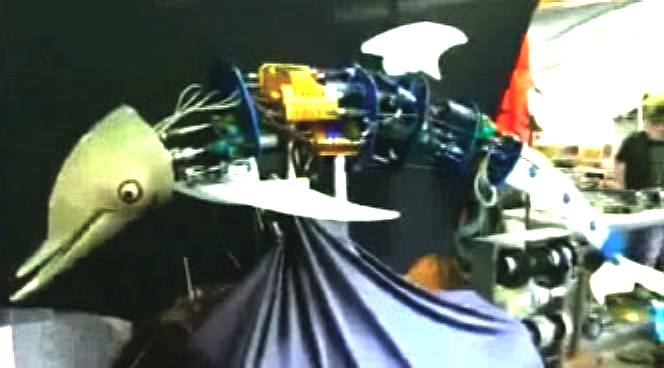
WINTERS
TALE -
A Robotic Dolphin was needed as a stand-in for Winter in sequences which would either be too dangerous or difficult, or which could exhaust the recovering dolphin. KNB needed to mimic the size, coloration, and water retention of the real dolphin in addition to mimicking the fluid motions. As the movie needed shots both in the water and at the surface of the water, a full scale dolphin robot with internal electronics and actuators was used. This would eliminate the strings often used with puppets, which would be harder to process out due to their effect on the water surface.
The dolphin needed to operate in salt water up to a depth of approximately 10 meters. Multiple coordinated actuators were needed to handle the many elements needed to model the motions of an actual dolphin. The motions needed to be able to be adjusted live - on-the-fly - to interact with the actors during the shoot. The preferred method in the movie industry is for the “puppet masters” to control the motions via multiple sophisticated radio control (R/C)
multi-axis control heads.
The mechanical spine and muscles of the dolphin were implemented using several
aluminum disks linked
together using sets of pivots along the center line with pairs of water
proof linear actuators providing the ability to flex up and down (axis
working together) and side to side (actuators working differentially). The
linear actuators were specialty products from Ultra Motion LLC, which were
driven by low voltage stepper motors for safety reasons in a conductive
saltwater environment.

LINKS
& REFERENCE
The
Terramar Project Dolphins
Geeky
Gadgets underwater robot swims like a manta ray 27-07-2012
KNB
EFX Group
http://theterramarproject.org/thedailycatch/dolphins/
http://www.geeky-gadgets.com/underwater-robot-swims-like-a-manta-ray-27-07-2012/
http://www.knbefxgroup.com/
http://www.telegraph.co.uk/earth/wildlife/8771139/Hollywood-ending-for-dolphins-tale.html
www.seewinter.com
http://www.quicksilvercontrols.com/2011_RoboticDolphin.html
http://www.seewinter.com/winter
http://www.seewinter.com/winter
http://www.navaldrones.com/seafox.html
http://www.huffingtonpost.co.uk/2012/11/08/us-navy-mine-hunting-dolphins_n_2092509.html
http://www.miltechmag.com/2013/08/auvsi-2013-unmanned-naval-systems.html
Gawker
job+stealing-robots-are-going-after-the-navys-mine+hunting-dolphins
Quicksilver
Controls 2011_Robotic Dolphin
Independent
Robots to replace navys minehunting dolphins
The
Guardian 2012 US military replace dolphins robots
RUVR
2013 Ukrainian-military-dolphins-go-missing
http://gawker.com/5964980/those-job+stealing-robots-are-going-after-the-navys-mine+hunting-dolphins
http://www.quicksilvercontrols.com/2011_RoboticDolphin.html
http://www.independent.co.uk/news/world/americas/robots-to-replace-navys-minehunting-dolphins-8374242.html
http://www.theguardian.com/world/2012/dec/02/us-military-replace-dolphins-robots
http://ruvr.co.uk/2013_03_12/Ukrainian-military-dolphins-go-missing/
http://www.guns.com/2013/03/12/ukrainian-military-dolphins-armed-with-guns-on-the-loose/
http://www.wired.co.uk/news/archive/2012-12/03/dolphin-bomb-disposal
http://now.msn.com/navy-dolphins-find-rare-19th-century-torpedo-off-california-coast
http://www.theguardian.com/world/2012/dec/02/us-military-replace-dolphins-robots
|
Robot
& Dolphin Jet
- Youtube
|
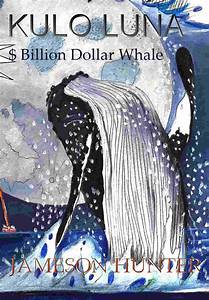
KULO
LUNA:
A
heartwarming adventure: pirate whalers
V a wounded whale and three kind people out to save the cetacean, with
a $Billion dollars riding on the conclusion.
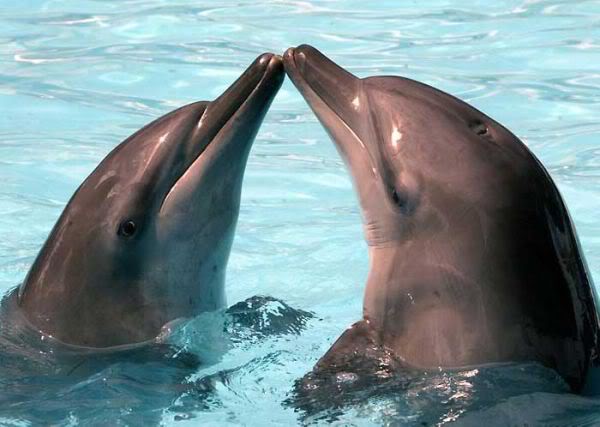

ACIDIFICATION
- ADRIATIC
- ARCTIC
- ATLANTIC - BALTIC
- BERING
- CARIBBEAN - CORAL - EAST
CHINA
ENGLISH CH
-
GOC - GULF
MEXICO
- INDIAN
-
IRC - MEDITERRANEAN -
NORTH SEA - PACIFIC
- PERSIAN GULF - SEA
JAPAN
STH
CHINA - PLASTIC
- PLANKTON - PLASTIC
OCEANS - SEA
LEVEL RISE - UNCLOS
- UNEP
WOC
- WWF
DINOSAURS
- DOLPHINS
- HUMANOIDS
- RAYS
- SHARKS
- WHALES
|











